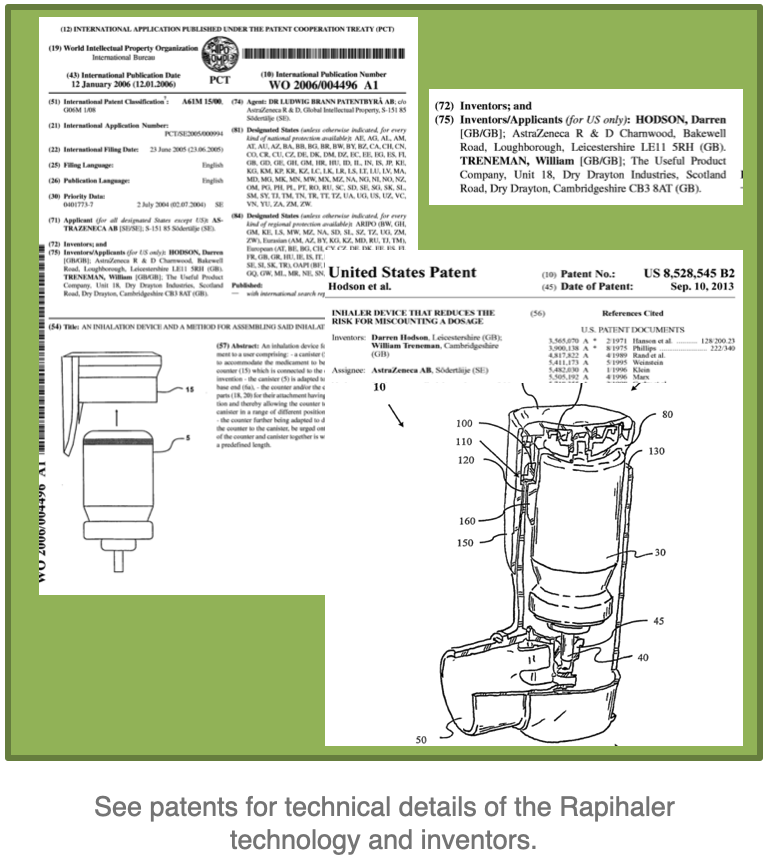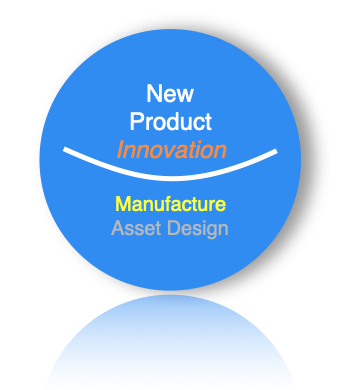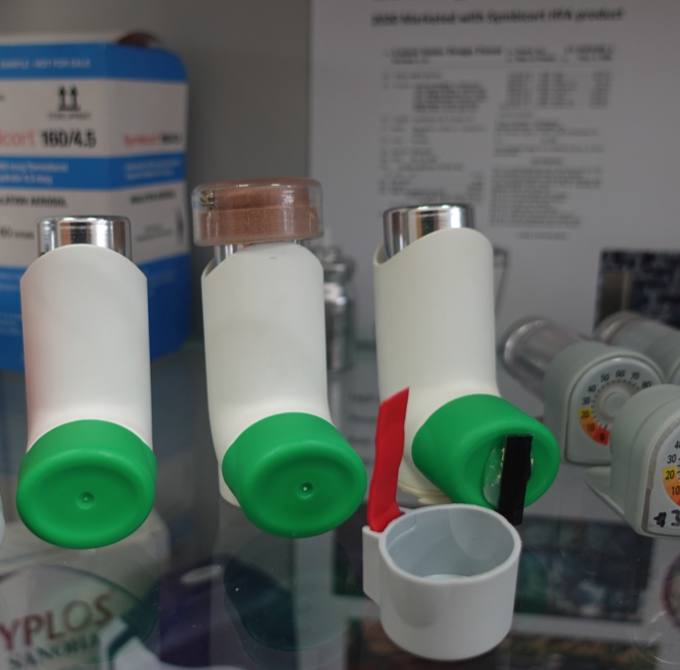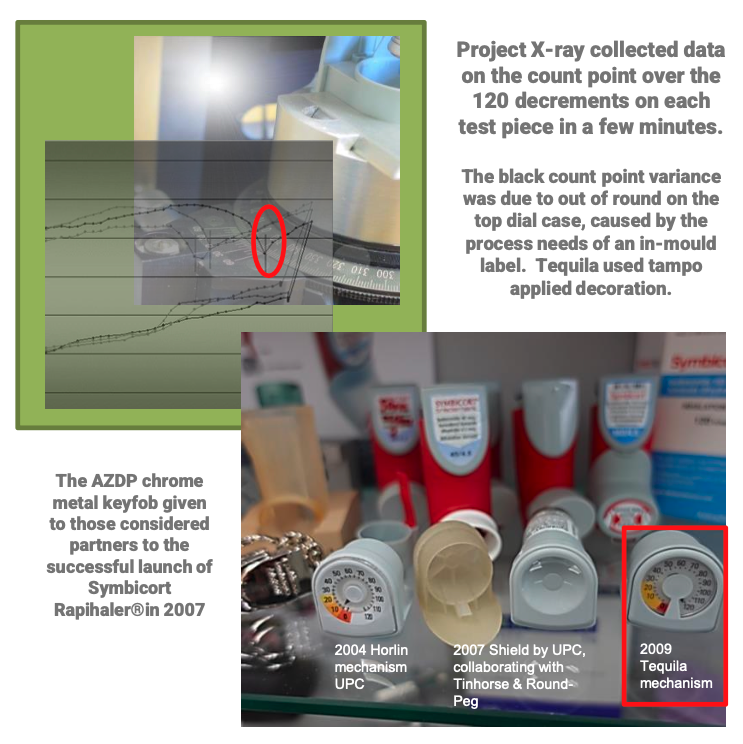
Symbicort Rapihaler® (2years)
The earliest Rapihaler® (Project Shield) was launched with Symbicort in June 2007. UPC’s main development work on Rapihaler® ended in late 2004. The 12 year confidentially clause with AstraZeneca on this work expired in 2019.
The two granted patents for Rapihaler® with priority dates in 2005, assigned to Astra Zeneca, cite UPC’s William Treneman as an inventor.
Starting in summer 2002 UPC worked on project Adder with E. Horlin, a Swedish inventor who had a patented can top counter mechanism. UPC was responsible for the pMDI inhaler body, and making the Horlin mechanism work using the least parts possible, whilst being robust to dirt ingress and water ingress.
The overriding concern was 100% reliable decrement counting every pMDI dose, inspite of the analogue dial gauge display providing only indication of remaining doses at-a-glance. It is not possible to register an inhaler counter product with the FDA, that does not count reliably as undercounting could potentially leave the patient without medication.



Symbicort Rapihaler® (2years)
The earliest Rapihaler® (Project Shield) was launched with Symbicort in June 2007. UPC’s main development work on Rapihaler® ended in late 2004. The 12 year confidentially clause with AstraZeneca on this work expired in 2019.
The two granted patents for Rapihaler® with priority dates in 2005, assigned to Astra Zeneca, cite UPC’s William Treneman as an inventor.
Starting in summer 2002 UPC worked on project Adder with E. Horlin, a Swedish inventor who had a patented can top counter mechanism. UPC was responsible for the pMDI inhaler body, and making the Horlin mechanism work using the least parts possible, whilst being robust to dirt ingress and water ingress.
The overriding concern was 100% reliable decrement counting every pMDI dose, inspite of the analogue dial gauge display providing only indication of remaining doses at-a-glance. It is not possible to register an inhaler counter product with the FDA, that does not count reliably as undercounting could potentially leave the patient without medication.
UPC were responsible for all the inhaler elements of Rapihaler®
UPC continued through two only 90% accurate 300 unit pilot builds to verify the design, and get to freeze. Confidence naturally fell in the AZ project leadership regarding the Horlin mechanism robustness, and an independent external review was sought.
Early maths by a reviewer indicated that an out of round dial case would fit the UPC bulk test data. The moulders hands were unfortunately tied by trying to keep the in-mould label flat, which compromised the primary function requiring a round dial case. Tampo printing was not acceptable to AZ at this time.
A further tolerance-based counting model was developed by the reviewers, which finally killed the Horlin mechanism at a key meeting, before actually the tolerance maths model had been fully verified.
The third Horlin n =500 batch proved reliable, but too late to be used in product. The power of maths models, even if unverified, was made clear to UPC in that moment.

UPC working with Martin Bunce of Tinhorse generated these models showing early counter tops and attached caps based on the clinical white bodies. In front is the Rapihaler® attached sliding cap, using a living hinge.

Proving beyond reasonable doubt, the accuracy of a counter mechanism requires through-life test automation.
UPC developed a custom recording test rig using torque, rotational angle and haptic detection to test a 120 decrement counter through life – to measure accuracy rather than just pass-fail.
It is our experience, borne of hard-won effort, that such custom rigs stop speculation and drive a rational design verification effort. We continue to make such rigs for our customers, whether for post-market work or for early-stage development.
When the component metrology, test data and maths prediction align you truly understand a counter design, and so can state beyond reasonable doubt that it will not undercount.
UPC continue to enjoy working collaboratively with like-minded experts in other associative fields to our core know-how. Project Adder bought together associate companies to a UPC collaboration.
